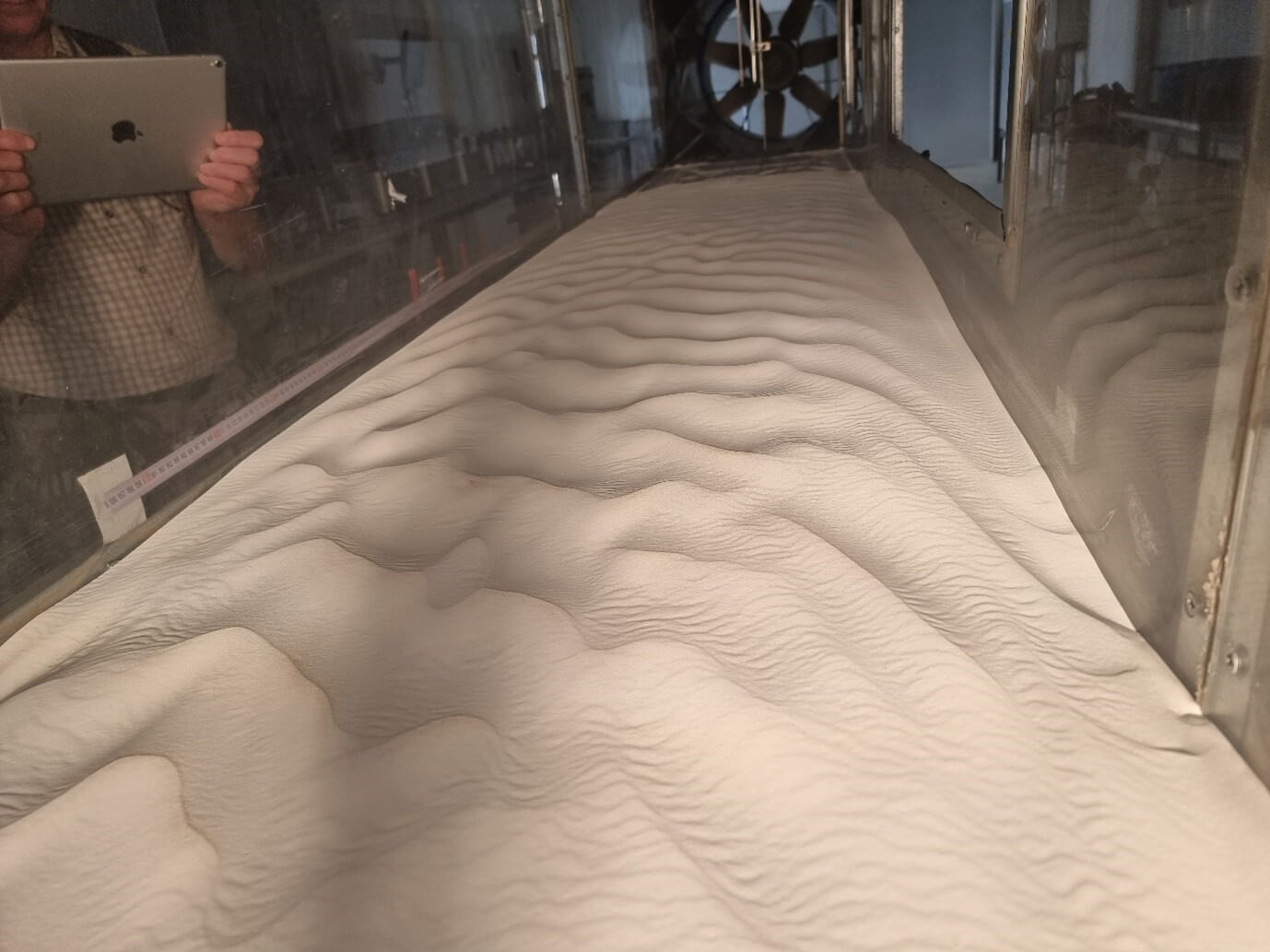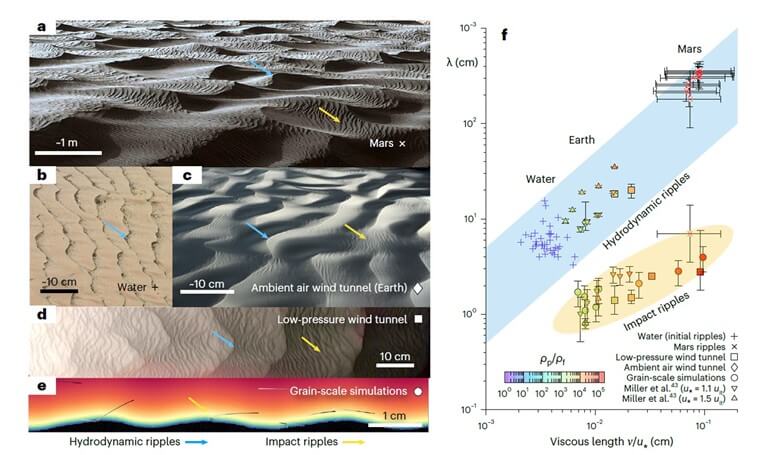Gallons = small waves. A new international study led by Ben-Gurion University has challenged the prevailing theory that different physical conditions allow the development of galleons that do not exist on Earth

Sand dunes are eye-catching patterns created by the action of the wind on the grains of sand. They are common over large areas on Mars and on Earth in sand dune areas and on the seashore. A new international study led by Ben-Gurion University of the Negev has challenged the prevailing theory that different physical conditions allow the development of galleons that do not exist on Earth. But what if one unified theory could explain their formation on the two different planets in our solar system? Through a series of experiments in wind tunnels and the development of an innovative mathematical model. The research findings were published in the prestigious journal Nature Geoscience .
Scientists from Denmark, Germany, Italy, China, the USA united for joint research led by the physicist Prof. Hazi Yitzhak, the geographer Prof. Yitzhak Katara and the doctoral student Lior Saban from Ben-Gurion University of the Negev in order to understand the formation of the phenomenon of the unique sand dunes observed on Mars and recently also on Earth. To this end, they developed a series of experiments in wind tunnels combined with an innovative mathematical model.
In December 2015, NASA's Curiosity spacecraft photographed sand dunes in Gale Crater on Mars. The pictures showed different patterns of sand gallons: large gallons - on a meter scale, and small gallons on them - on a decimeter scale. The coexistence of the two length scales observed on Mars was a very important discovery, as it had not yet been discovered on Earth.

Researchers claimed that the small galleons were created as a result of the impact of the grains of sand carried by the wind, when these hit the sandy soil they cause the creation of tiny piles of sand that develop over time into galleons that advance with the direction of the wind. The large gallons according to their method were created due to hydrodynamic instability like the gallons that are formed on Earth under the surface of the water. The theory predicted that the atmospheric pressure on Mars, which is 100 times smaller than that of the Earth, would not allow the development of both sizes of gallons on the surface of the Earth at the same time.
The research group wanted to examine whether such a phenomenon could exist under Earth conditions (in terms of atmospheric pressure) and therefore built a series of experiments that were conducted in a wind tunnel in the Aeolian Simulation Laboratory at Ben Gurion University which is 7 meters long in the Negev and in a unique tunnel that simulates the low pressure on the surface of Mars located at Ahros University in Denmark. The scientists also examined how the grain size, air pressure and wind speed affect the dimensions of the gallons. To this end, they used tiny glass balls (90 microns in size) to match the size of the sand particles to Martian conditions (the average size of sand grains in dunes on Earth is 250 microns compared to 100 microns on Mars). The experiments included measurements of the height and wavelength of the gallons that developed as a function of the wind speed and at different times throughout the experiment as well as a three-dimensional scan of the morphology of the gallons.
The results of the experiments showed a pattern similar to the one discovered on the surface of Mars, but on a smaller scale - large gallons with a wavelength of about 10 cm and on top of them small gallons with a wavelength of 1 cm. According to the new model, the large gallons are created from hydrodynamic instability while the small ones are normal gallons. Therefore, it seems that the action of the wind on the grains of sand on Mars is somewhat similar to the action of water flow on the surface of the sand on Earth and this is due to the high kinematic viscosity of the Martian atmosphere which determines the wavelength of the gallons as in gallons in water (the kinematic density is the ratio between the dynamic viscosity and the flow density).
"Understanding the physics of the movement of sand by the wind is important for understanding landscape design processes on Earth and on Mars, especially in the aspect of establishing future manned colonies on Mars," he explained Prof. Hazi Yitzhak. "Large areas on Mars are subject to the influence of sand and dust storms, so an understanding of these processes will help the first colonists better deal with the challenging environment of Mars. It's amazing to offer something so radical and new in a field I've been researching for more than 20 years. Of course, the subject must be further investigated through additional controlled experiments, but it is exciting to find on Earth what can be clearly seen on Mars." Prof. Hezi Yitzhak said.
This research (Grant No. 1270/20) was supported by the National Science Foundation, the Germany-Israel Foundation for Scientific Research and Development (GIF) (Grant No. 155-301.10/2018), the National Natural Science Foundation of China, the Texas A&M Engineering Experiment Station , Europlanet grant No. 871149 and the Horizon 2020 research and innovation program.
The research group included: Prof. Hezi Yitzhak He is a member of the Department of Solar Energy and Environmental Physics, Prof. Yitzhak Katara He is a member of the Department of Environmental Sciences, Geoinformatics and Urban Planning, both at Ben-Gurion University of the Negev.

One response
Thanks. exciting!
By the way, how do you define viscosity and density in a discrete medium (which is not a "continuum"), blue? It is likely that the measure for which a "continuum-like property" exists is different in different discrete media (such as glass particles with different diameters).